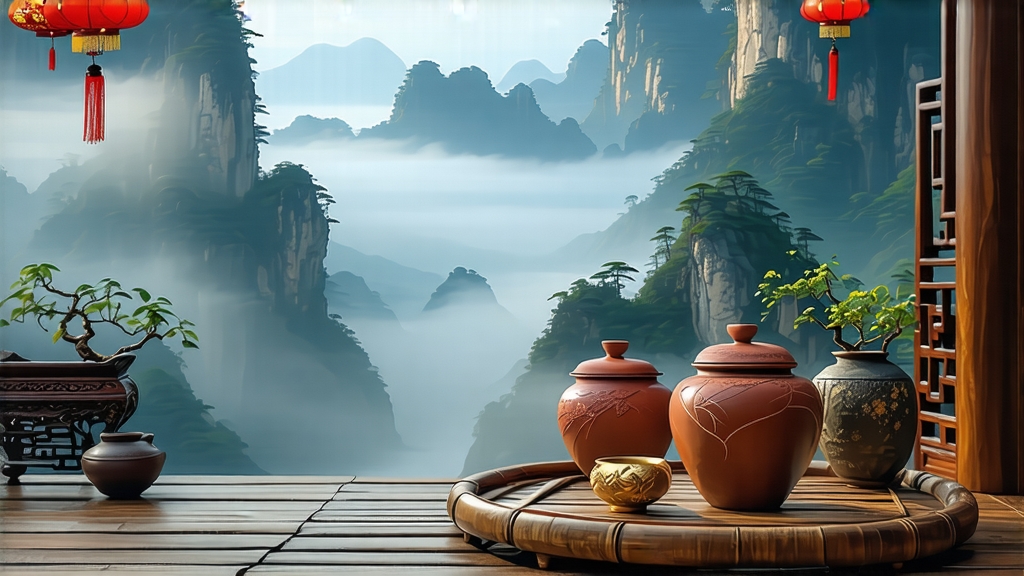
Liu Bao—pronounced “lyow-bow”—is the quiet diplomat of China’s dark-tea family. While Pu-erh hogs the spotlight, Liu Bao has spent four centuries smoothing its edges in the humid karst foothills of southern Guangxi, emerging with a flavor that tastes like history itself: sweet earth, camphor, and a fleeting whisper of betel nut that makes Vietnamese and Malaysian traders nod in recognition. To understand Liu Bao is to watch a tea literally learn from time; it is the only Chinese tea whose reputation was forged on the decks of clipper ships and in the tin-roofed kopitiams of maritime Southeast Asia.
1. From Frontier Leaf to Maritime Currency
The story begins in the small county of Cangwu, where the Liu Bao village gave its name to the tea in the Qing-era Yongzheng period (1723–1735). Imperial edicts encouraged the conversion of wild Camellia sinensis var. sinensis gardens into tribute tea, but geography dictated a different fate. Guangxi’s rivers flow south to the Xi Jiang and, eventually, the Pearl River Delta. Compressed baskets of Liu Bao rode these currents to Guangzhou, then to Hong Kong, Singapore, and Kuala Lumpur. By the late nineteenth century, Liu Bao had become a hard currency among coolie laborers: one basket could buy passage, medicine, or a month’s rent. The British Straits Settlements even stamped Liu Bao baskets with excise seals—rare proof that a Chinese dark tea once carried colonial duty marks.
2. One Leaf, Three Faces
Modern Liu Bao is classified not by mountain or vintage but by degree of fermentation and storage micro-climate.
- Qing Xiang (“light-aroma”): Fermented 30–45 days, then dried and sold within a year. Liquor is russet-amber, tasting of raw cacao and dried longan.
- Chun Xiang (“mellow-aroma”): Fermented 60–90 days, rested six months in bamboo baskets. The cup adds hints of nutmeg and a silky body.
- Chen Xiang (“aged-aroma”): Fermented 120 days or more, then moved to the legendary “big warehouses” of Wuzhou where relative humidity hovers at 78 %. After five years the tea develops the signature betel-nose; after fifteen, it acquires a jujube-red liquor and a camphor-cool finish that lingers like mint in a cathedral.
3. The Wet-Pile Alchemy
Unlike the dry-pile of Pu-erh shou, Liu Bao’s wo dui is conducted atop thick bamboo mats laid on raised wooden platforms. Piled leaves are misted with mineral-rich spring water, then covered with jute sacks. The magic lies in the native microbiota: Aspergillus chevalieri, Blastobotrys adeninivorans, and a local yeast dubbed Wuzhouensis LB-76. Over six weeks the pile’s core temperature oscillates between 55 °C and 62 °C, caramelizing leaf sugars and cleaving bitter catechins into softer theaflavins. Every three days a “turner” shuffles the heap by hand, sniffing for the moment the aroma shifts from compost to dried apricot. When the target microbe count is reached—usually 1.2 × 10⁶ CFU/g—the pile is dismantled and sun-dried on bamboo trays for exactly four hours, enough to lock in flavor without arresting enzymatic activity.
4. The Bamboo Basket Signature
Post-fermentation, Liu Bao is steamed for ninety seconds, then packed into plaited bamboo baskets called lang. Each lang holds seven liang (about 260 g) and is stacked in sevens, referencing the ancient “Seven Sons” weight code. The bamboo is not mere packaging; it breathes, imparting a subtle green-grass note that frames the darker flavors. During the month-long boat journey to Southeast Asia, seawater spray and tropical humidity jump-started a slow secondary fermentation that early merchants mistook for magic. Today, warehouse masters in Wuzhou recreate that micro-climate by misting the lang twice weekly and rotating them every fortnight—tea choreography that has remained unchanged since 1858.
5. Brewing Liu Bao: A Ritual of Patience
Western brewers often treat dark tea like black tea—boiling water, three minutes,